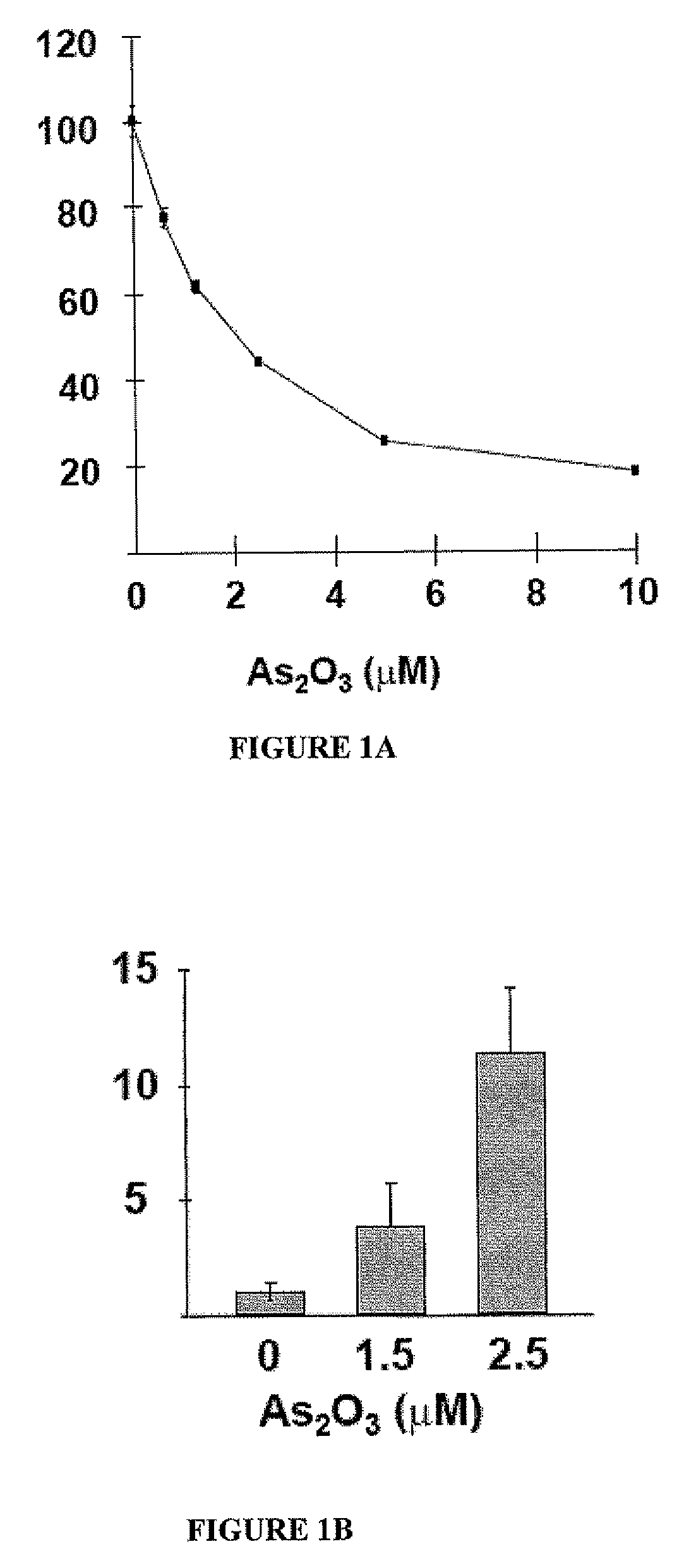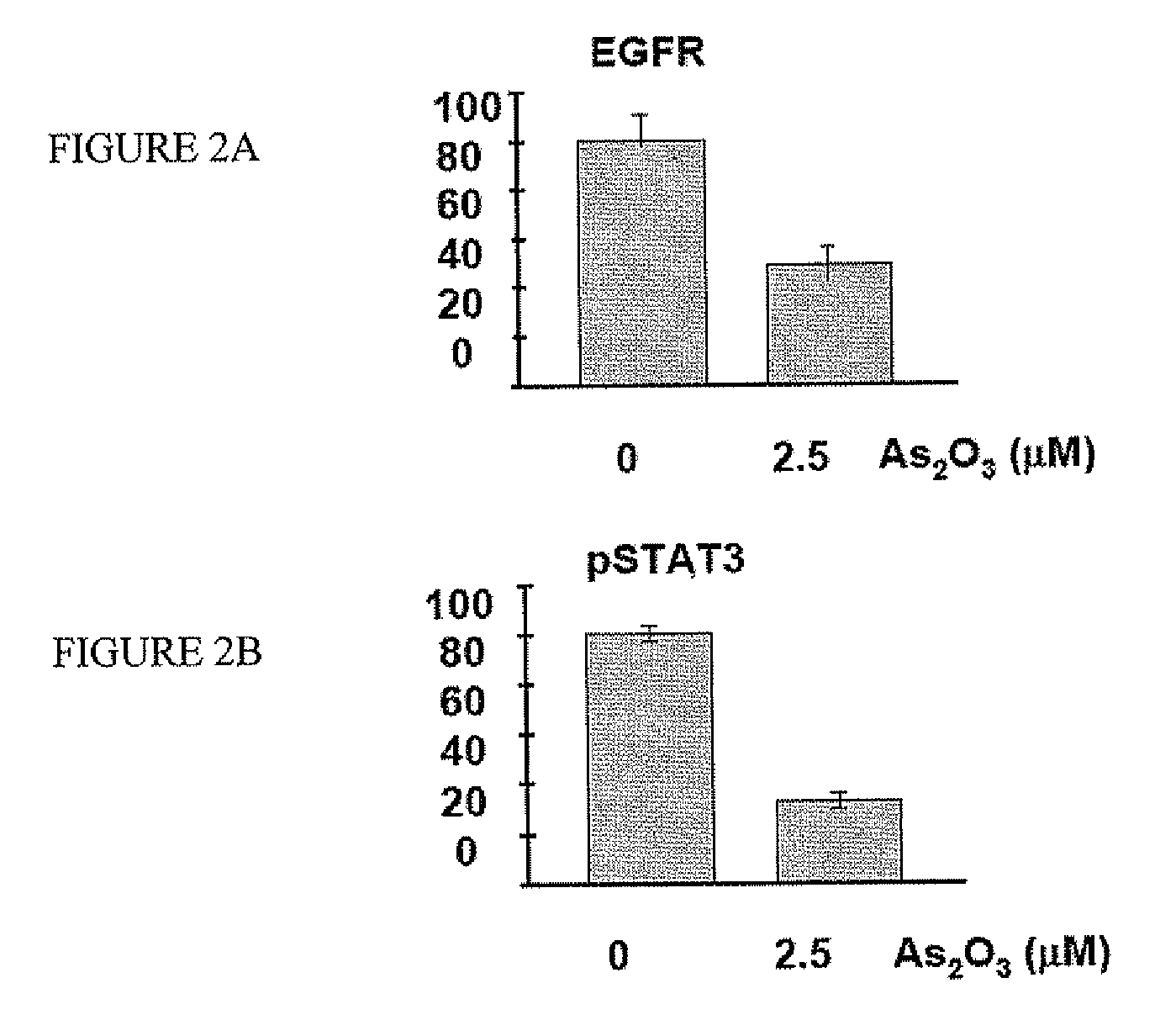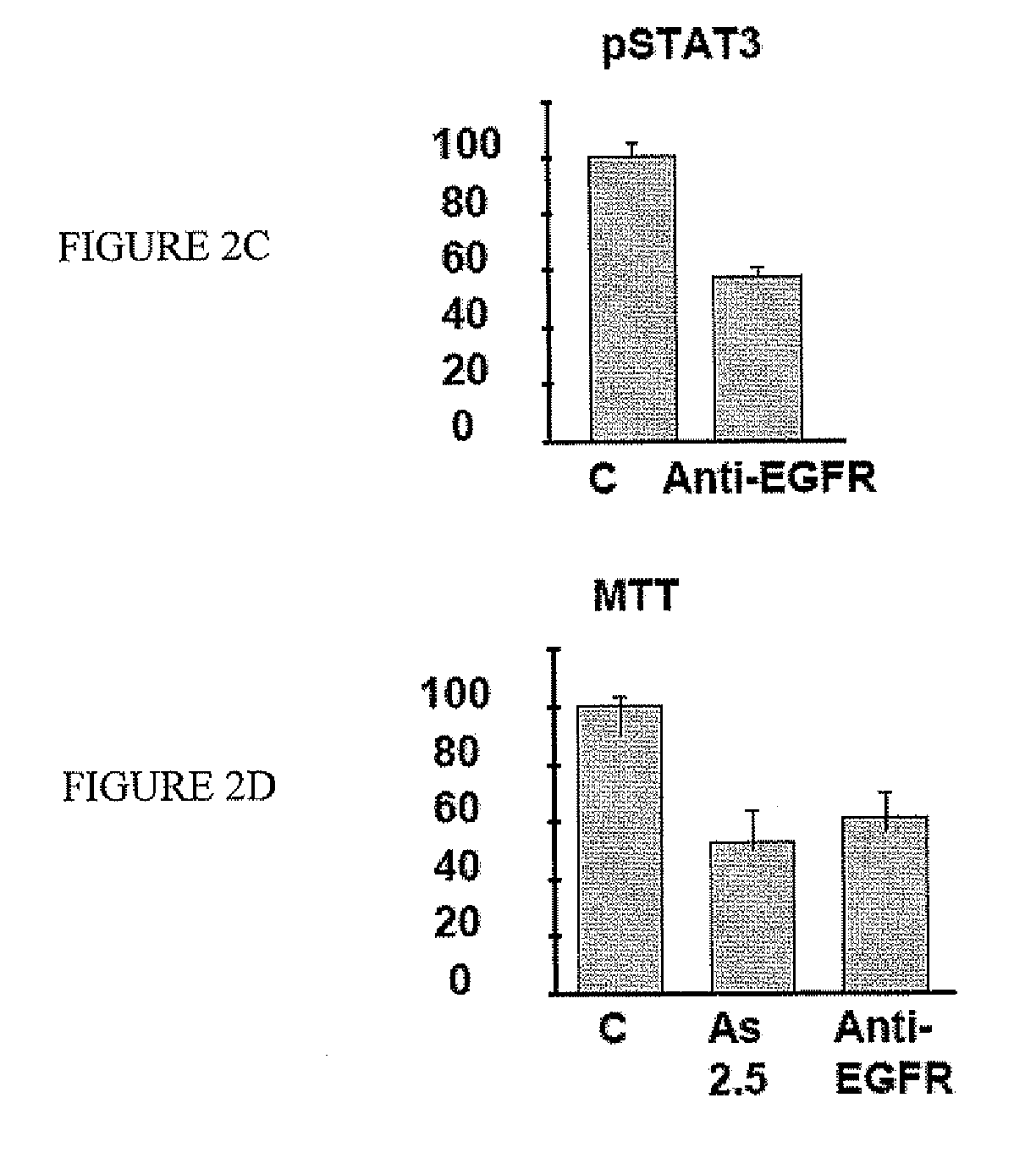Method for Inhibiting Cancer Using Arsenic Trioxide
a technology of arsenic trioxide and cancer, which is applied in the field of cancer inhibition by arsenic trioxide, can solve the problems that conventional treatment strategies including standard chemotherapy or high-dose therapy followed by autologous stem cell transplantation are not curative in most instances
- Summary
- Abstract
- Description
- Claims
- Application Information
AI Technical Summary
Problems solved by technology
Method used
Image
Examples
example 1
As2O3 Induced Apoptosis in FaDu Cells by Activation of Caspase-3
[0072] MTT results showed that As2O3 inhibited FaDu cell proliferation in a dose- and time-dependent manner (FIG. 1A). After 2 days of As2O3 treatment at 2.5 μM, about 60% of FaDu cells were apoptotic, as determined by flow cytometric analysis of annexin-V / PI. Western blot analysis showed that activated (cleaved) caspase-3 was progressively up-regulated with increasing concentrations of As2O3 (FIG. 1B), suggesting that the apoptosis was mediated via the caspase 3 pathway.
example 2
EGFR Signaling was Necessary for FaDu Cell Proliferation and Targeted by As2O3
[0073] Western blot analysis showed that FaDu cells expressed high levels of EGFR (FIG. 2A). Therefore, EGFR signaling might be involved in FaDu cell proliferation. Indeed, there was constitutive phosphorylation of STAT3, a downstream effector of EGFR signaling. Western blot analysis showed that EGFR was targeted by As2O3. Treatment of FaDu cells with As2O3 led to down-regulation of EGFR and hence decreased phosphorylation of STAT3 (FIG. 2B). To show that EGFR signaling was critical for cellular proliferation, FaDu cells were treated with a neutralizing anti-EGFR antibody. This led to suppression of STAT3 phosphorylation (FIG. 2C), which resulted in a decrease of cellular proliferation to an extent comparable with As2O3 treatment (FIG. 2D). These results suggested that As2O3 inhibited FaDu cell proliferation by targeting EGFR. RT-PCR showed that FaDu cells constitutively expressed EGF. However, the EGF tr...
example 3
As2O3 Did not Affect EGER Gene Transcription
[0074] Semi-quantitative RT-PCR showed that As2O3 treatment did not affect EGFR gene transcription. The results were confirmed by Q-PCR, which showed practically no change in EGFR mRNA before and after As2O3 treatment (FIG. 3). Therefore, As2O3 down-regulated EGFR by post-transcriptional mechanisms, possibly by increasing its degradation.
[0075] To investigate the reason for As2O3 induced down-regulation of EGFR, Western blot analysis was performed. Triplicate experiments showed a dose dependent increase of EGFR phosphorylation at tyrosine 1045 with As2O3 treatment (1 hour). There was yet no change in EGFR at this time point. Immunoprecipitation with an anti-EGFR antibody followed by immunoblotting with the appropriate antibodies was performed. There was a dose dependent increase in Cbl binding with As2O3 treatment (1 hour), in parallel with increase in EGFR 1045 phosphorylation. Immunoprecipitation with an anti-EGFR antibody was followed...
PUM
 Login to View More
Login to View More Abstract
Description
Claims
Application Information
 Login to View More
Login to View More - R&D
- Intellectual Property
- Life Sciences
- Materials
- Tech Scout
- Unparalleled Data Quality
- Higher Quality Content
- 60% Fewer Hallucinations
Browse by: Latest US Patents, China's latest patents, Technical Efficacy Thesaurus, Application Domain, Technology Topic, Popular Technical Reports.
© 2025 PatSnap. All rights reserved.Legal|Privacy policy|Modern Slavery Act Transparency Statement|Sitemap|About US| Contact US: help@patsnap.com



